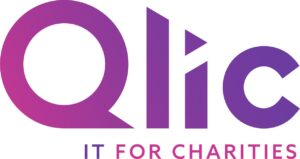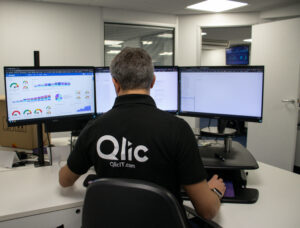
Sustainability has quickly become a core value shaping decisions across every sector. Businesses and organisations of all sizes are rethinking their impact on the planet. For many charities, particularly those with an environmental focus, building a sustainable business model aligns with their mission and commitment to positive social impact.
Organisations can approach sustainability in diverse ways, from minimising their carbon footprint and embracing the circular economy to promoting social responsibility through their actions and choices. Implementing a sustainable IT strategy can also help nonprofits reduce their environmental impact, maximise resources, and increase operational efficiency.
Let’s explore how your nonprofit can establish an IT strategy that’s both eco-friendly and efficient, helping to make a lasting, positive impact while supporting your broader mission.
Understanding Sustainable IT in the Nonprofit Sector
Sustainable IT is about using and managing technology in a way that reduces its environmental footprint and promotes long-term sustainability. For nonprofits, sustainable IT involves considering every aspect of technology, from selecting eco-friendly devices to disposing of outdated equipment responsibly. This approach not only cuts down on resources but also reduces carbon emissions.
One example of sustainable IT practices is favouring online fundraising campaigns instead of in-person events. By connecting with donors through online fundraising platforms, nonprofits can still foster engagement and increase donations without the environmental impact associated with travel, event materials, and venue use.
Another key to sustainable IT is staying current with the latest energy-efficient technologies. Outdated legacy technology tends to consume more power and lacks the efficiency of newer models. Updating legacy systems can help your charity reduce energy consumption significantly, supporting sustainability efforts while also improving operational performance.
How to Implement a Sustainable IT Strategy
To create a strong foundation for a sustainable IT strategy, a structured approach is key for charities to build an IT framework that supports both their mission and the environment.
Here are the key steps to prioritise when creating a sustainable IT strategy;
- Define and Prioritise Your Goals
- Conduct an IT Audit and Assess Your Data Center Infrastructure
- Implement an Efficient Hardware Lifecycle Management
- Accelerate Your Digital Transformation
- Educate and Train Your Charity Staff
- Educate and Train Your Charity Staff
- Improve Energy efficiency
Define and Prioritise Your Goals
Your charity can start by setting SMART (Specific, Measurable, Achievable, Relevant, Time-bound) objectives to ensure your goals are realistic and measurable. When defining sustainability goals, consider three key areas of impact:
– Supply Chain Impact: Look at the environmental effects associated with the manufacturing and transportation of IT equipment. Select vendors that prioritise sustainability, and work to minimise carbon-intensive shipping methods when possible.
– Operational Impact: Focus on how your IT department and employees use equipment in-house. This can involve choosing energy-efficient technology, minimising daily power usage in your business operations, and encouraging practices that reduce waste.
– End-of-Use Impact: Plan for what happens when devices reach the end of life. Explore options to donate or recycle equipment to prevent e-waste.
Conduct an IT Audit and Assess Your Data Center Infrastructure
Before implementing changes, it’s important to know where you stand. Conducting a thorough IT audit helps identify the most energy-intensive areas in your data centres and network infrastructure. This audit should cover everything from energy usage to data storage practices.
Make sure to ask critical questions such as: how much energy is being used? What are the costs involved and are there any business practices that can be optimised? For instance, data management for nonprofit organisations plays a critical role in their business operations.
Data centres, however, are responsible for approximately 2% of worldwide energy consumption. To minimise environmental impact, your charity should choose a data centre that has easy access to renewable energy sources and has measures in place to optimise server utilisation.
Implement an Efficient Hardware Lifecycle Management
Implementing an effective hardware lifecycle in your charity will help you extend device longevity and reduce waste. Sustainable hardware management extends beyond purchasing energy-efficient devices; it includes prolonging the life of existing equipment through regular maintenance and upgrades. Implementing device refresh programs allows your organisation to replace older, less efficient devices without creating unnecessary e-waste. Outdated but functional equipment can be donated or recycled, aligning with responsible disposal practices.
Accelerate Your Digital Transformation
Adopting new technologies is essential not only for meeting stakeholder expectations but also for enhancing operational sustainability. By digitally transforming your IT systems with cloud computing, automation, and virtual meeting platforms, you’ll reduce reliance on physical resources and decrease your environmental impact. This digital shift allows nonprofits to achieve more with fewer resources.

Educate and Train Your Charity Staff
Equip your team with the knowledge and tools to work sustainably by providing training on energy conservation and sustainable practices that can be adopted in everyday routines. Educate staff on minimising energy usage, the value of resource-efficient tools, and best practices for data management. Additionally, introduce them to AI tools like ChatGPT, which can help analyse data, automate tasks, and ultimately save time and energy.
Keep in mind that while AI offers great efficiency gains, it also requires considerable energy. This is why it is essential to train your charity staff to use these tools effectively and responsibly so that you can balance sustainability with productivity.
Improve Energy Efficiency
Energy efficiency is a key pillar of a sustainable IT strategy. Your charity should aim to optimise energy use across the following areas:
– Equipment Efficiency: Increase the performance of each device while minimising the number of assets required.
– Resource Efficiency: Choose technologies designed to work seamlessly from edge to cloud with minimal need for cooling, power conversion, or additional support resources.
– Software Efficiency: Run applications on optimised hardware platforms that automate processes to reduce energy needs and enhance system management.
– Data Efficiency: Implement a strategic data management approach, which includes reducing unnecessary data collection, consolidating storage, and optimising backup and retention practices.
Nonprofit Sustainability: The Benefits of Sustainable IT
For nonprofits, practising corporate social responsibility (CSR) plays a critical role in reinforcing their identity and showing their dedication to social good. Implementing a sustainable IT strategy is a significant part of this mission, allowing nonprofits to operate responsibly, conserve resources, and positively impact the environment. Sustainable IT also offers tangible benefits that strengthen organisational efficiency, cut costs, and align with ESG (Environmental, Social, and Governance) standards.
Let’s look at the key benefits of a sustainable IT strategy for nonprofit organisations;
- Energy Efficiency and Cost Savings
- Positive Impact on the Environment and Communities
- Improve Your Nonprofit Organisational Efficiency
- ESG Regulation Compliance
Energy Efficiency and Cost Savings
Using energy-efficient technology allows nonprofits to cut down on electricity consumption, which, in turn, leads to substantial cost savings. By investing in more efficient devices, nonprofits not only reduce energy use but also prolong the lifespan of their hardware, reducing the need for frequent replacements and cutting down on waste production.
Positive Impact on the Environment and Local Communities
Sustainable IT practices allow nonprofits to minimise e-waste, lower carbon emissions, and demonstrate their commitment to ethical practices. These choices contribute to a healthier environment for future generations, supporting a world that aligns with the values of the communities they serve. By taking a stand for environmental responsibility, nonprofits can build trust with donors and partners who prioritise sustainability.
Improve Your Nonprofit Organisational Efficiency
Sustainable IT practices go beyond eco-friendly tech; they also streamline operations, which can significantly enhance organisational efficiency. For instance, migrating to cloud computing reduces the need for physical servers, making data access faster and more flexible. Automated tools can help manage donor data more effectively, while online communication platforms reduce the need for printed materials and physical meetings.
This shift to streamlined processes not only reduces environmental impact but also empowers your charity staff to focus on higher-value tasks, ultimately improving overall productivity.
ESG and Sustainability Regulation Compliance
As environmental regulations and ESG frameworks become more prominent, nonprofits need to align with these standards. ESG is a framework that helps stakeholders understand how organisations operate in relation to environmental, social, and governance factors. Nonprofit board members should invest in a sustainable IT strategy if they want their organisations to meet ESG goals and be compliant with current and evolving laws.
By improving IT systems in line with ESG, nonprofits demonstrate accountability to donors and stakeholders, showing a commitment to upholding environmental and social values.

Closing Thoughts
Incorporating sustainable IT practices into nonprofit operations is a strategic choice. By transitioning to newer, more energy-efficient technology and meeting ESG regulations, nonprofits can make a meaningful difference in both their mission and their operational footprint.
Implementing a sustainable IT strategy brings numerous benefits, from cost savings and improved productivity to an enhanced reputation and community impact.
Through these steps, nonprofits can lead by example, proving that sustainability and social responsibility are within reach for organisations of all types and sizes. Embracing sustainable IT practices is an essential move towards a greener, more effective future for all.
Get in Touch
Would your charity like to learn more about implementing your IT infrastructure to enhance your efforts towards sustainability? Book your FREE consultation with our IT experts at Qlic by clicking the button below.






